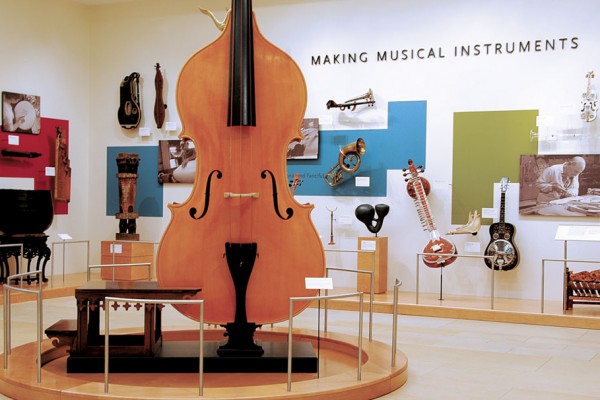Continued (page 9 of 13)
Is there a difference between your favorite movie to sit down and watch and your favorite movie to present to an audience?
I’ve presented so many movies to audiences through TCM, so I think my job on TCM is to interest people in a movie by telling them something about it to make them stop and watch it or make the movie more interesting. Today I watched a movie on TCM that wasn’t very good – Elephant Walk with Elizabeth Taylor and Peter Finch. It’s OK, but what’s so interesting is that Vivien Leigh started making the film, but she had a nervous breakdown and she had to drop out. In the long shots, it’s Vivien Leigh. If you know her and know what she was like, you can tell it’s not Elizabeth Taylor. If you know that, it makes the movie fascinating to watch. That’s my job. In the film festival, I really am introducing my favorite movies to people. Lauren Bacall said one time, a lot of people say they don’t like old movies, but if you’ve never seen Brief Encounter made in 1945, it’s not an old movie, it’s a new movie. If you haven’t seen Adventures of Robin Hood, it’s not an old movie, it’s a new movie. It’s like saying you wouldn’t read [The Adventures of] Tom Sawyer or the Bible because they are old books. If you don’t see things because you perceive them as being old, you’re denying yourself great pleasure.
You’ve been to Sedona a few times now. What do you like to do when you come here?
It’s so nice to come to Sedona and see this great scenery. I like to do nothing. Maybe walk around and look at the scenery. It’s so awesome to me. It’s unlike any other place in the world. I’ve been to the Alps and they are extraordinary but I don’t think there’s anyplace else with these vistas. I think it’s a miracle and really wonderful the city has been designed as it has. With all the building going on, none of that really gets in the way of the views. It’s been put together brilliantly. It’s not a place where I want to be indoors.
You still write for The Hollywood Reporter and you interview actors on the red carpet at the Academy Awards, so you see all of the current movies, too. Who should we be watching in terms of actors and directors?
John Krasinski from The Office is really wonderful. He’s directed a new movie called Brief Interviews with Hideous Men and he was wonderful in Away We Go. I think he’s clever and talented and someone to watch. Javier Bardem and Daniel Day-Lewis are going to be great stars for a long time. There are a lot of great people but it’s so hard to know who’s going to get the opportunity because so many movies open now. It depends on who has the lucky break. It’s difficult to have a long career now.
You’ve interviewed some of the greatest actors of all time. Does anyone in particular stand out?
There are very few that haven’t [stood out] in one way or another. What stands out is even if you haven’t had a great respect for an actor beforehand, when you talk to them you realize right away why they are so successful and good. Most of them are very positive, very professional and enjoy the profession they are in. We don’t do interviews with people unless they’ve had a long career, and most succeed in this business because they are nice people.
Connie Stevens: Saving Grace B. Jones
Connie Stevens might be best known for her role at perky Cricket Blake in the late 1950s and early 1960s detective television series Hawaiian Eye and as the vocal chords behind “Sixteen Reasons” and “Kookie, Kookie, Lend Me Your Comb.” In the 1980s, she had roles in popular TV series such as The Love Boat, Murder, She Wrote and Baywatch; and in the 1990s she launched her own cosmetics company. But Connie told Sedona Monthly via telephone from her Los Angeles office that she was meant to be a director. She directed her first film, a documentary called The Healing, in 1997. She spoke to us about Saving Grace B. Jones, the feature film she wrote, produced and directed.
Sedona Monthly: At the end of Saving Grace B. Jones, it states that the movie is inspired by true events. Can you elaborate?
Connie Stevens: [Almost] everything is true – I’m the little girl [Carrie]. After 9/11, I drove across the country and went through this town, Boonville. As happens with a lot of people, an incident will happen, and as time goes by it’s almost like it never happened. Since it was so traumatic, I did not speak about it at all. When I went through the town, everything came back to me so vividly. I found the little girls who lived across the street – they are my age of course. We started talking about Grace and what had happened. I said I was going to go home and write the story, and I did. A friend of mine said I had to make the movie, and that’s how it happened.
This was not your first time directing and producing a film, however, your previous experience was with a documentary about women in the Vietnam War. What was it like working on a feature film?
It was very heady and exciting. I didn’t sleep much. I was totally consumed. I was nervous – there was so much to get done. I had to stay totally focused at every moment. Before I went [on location], I put the film into pictures. It really helped me. When I had to jump from scene-to-scene when the weather wasn’t right or what have you, I already had my book of pictures. If we had to jump to something else, the book triggered my mind.
Are you looking forward to doing it again?
I’m prepping a new film called Prairie Bones. It takes place from 1870 to 1890. I am a history buff.
Does it give you a different appreciation for acting when you’re working behind the camera?
Absolutely. I was so totally into the actors. I promised them they would never have a false second on the screen, and I think I achieved that. I can’t tell you how growing it’s been for me to have them as my family. Discovering those children who had never done anything before was just amazing. Two of the children I saw at the local Day’s Inn when I put an ad in the paper. They read for me, and they were just amazing. We call ourselves ‘friends forever.’



